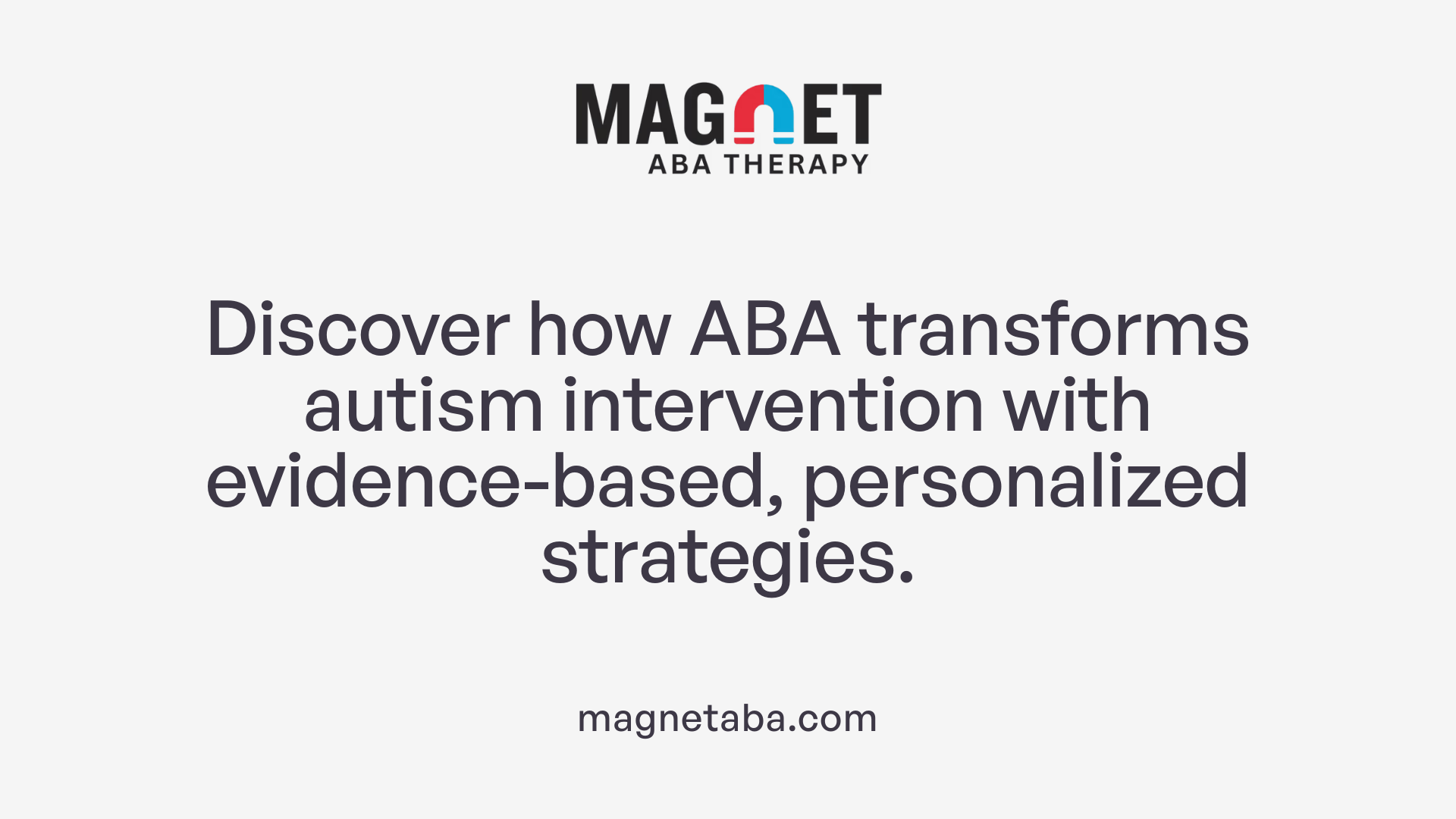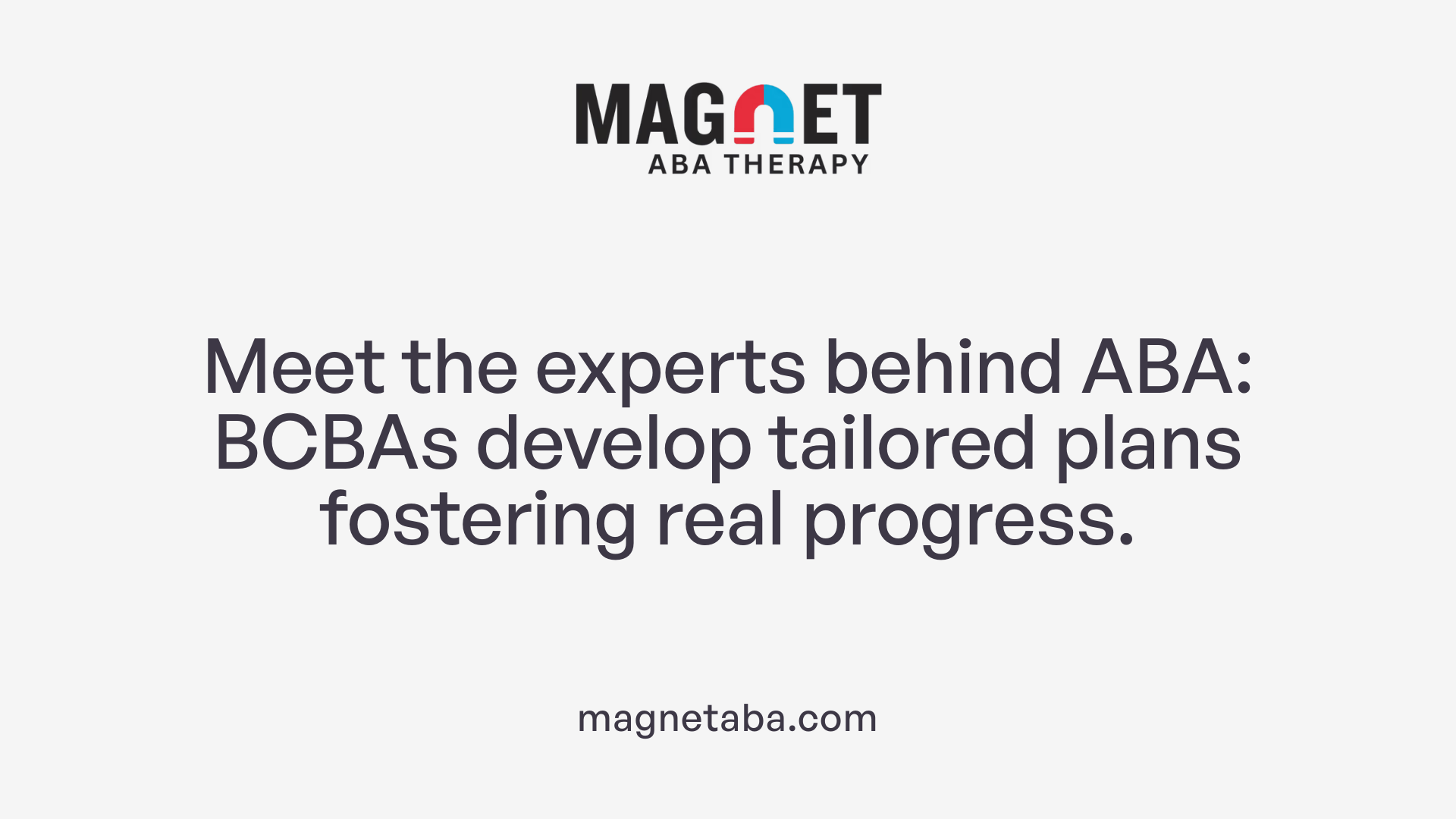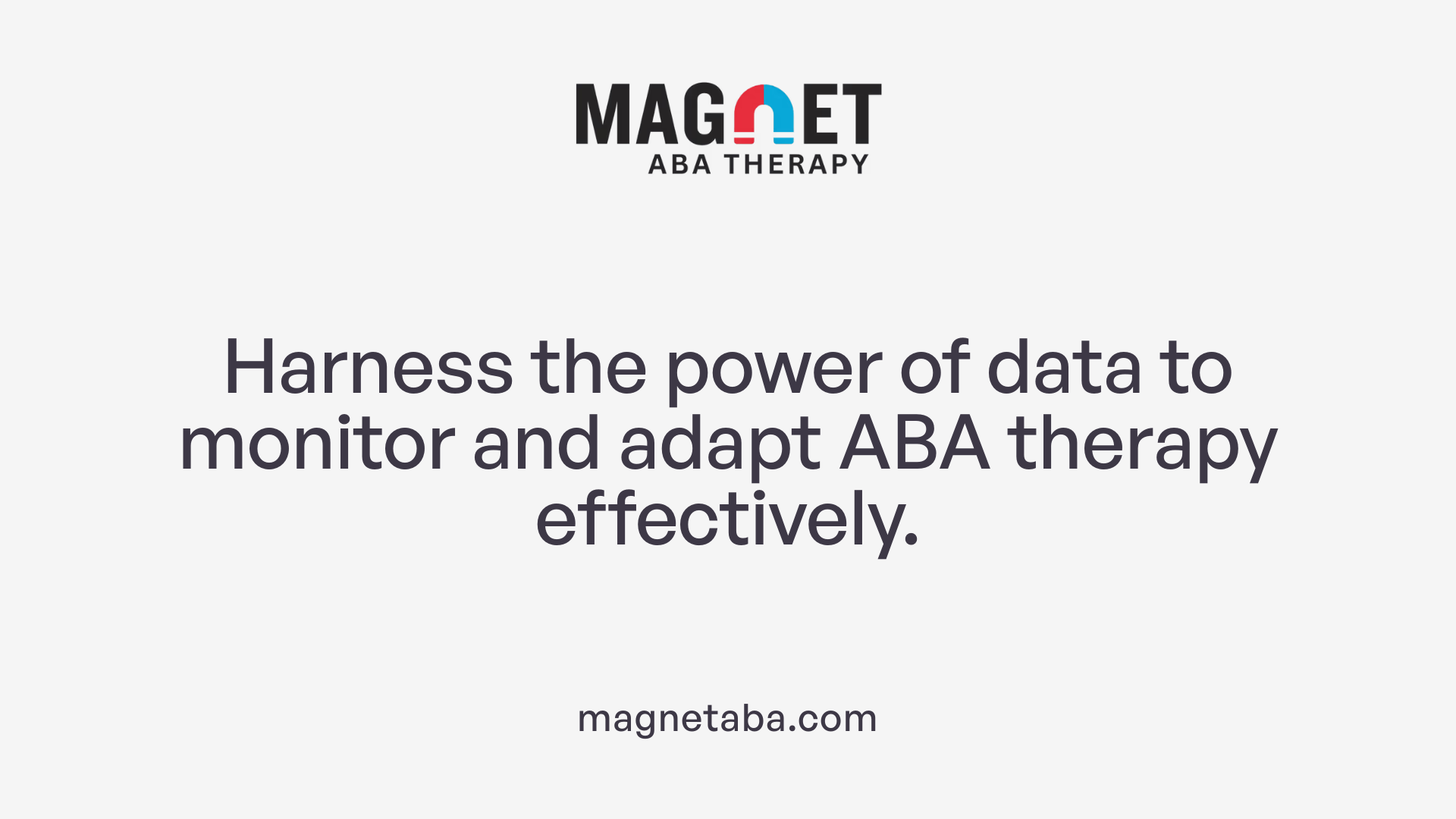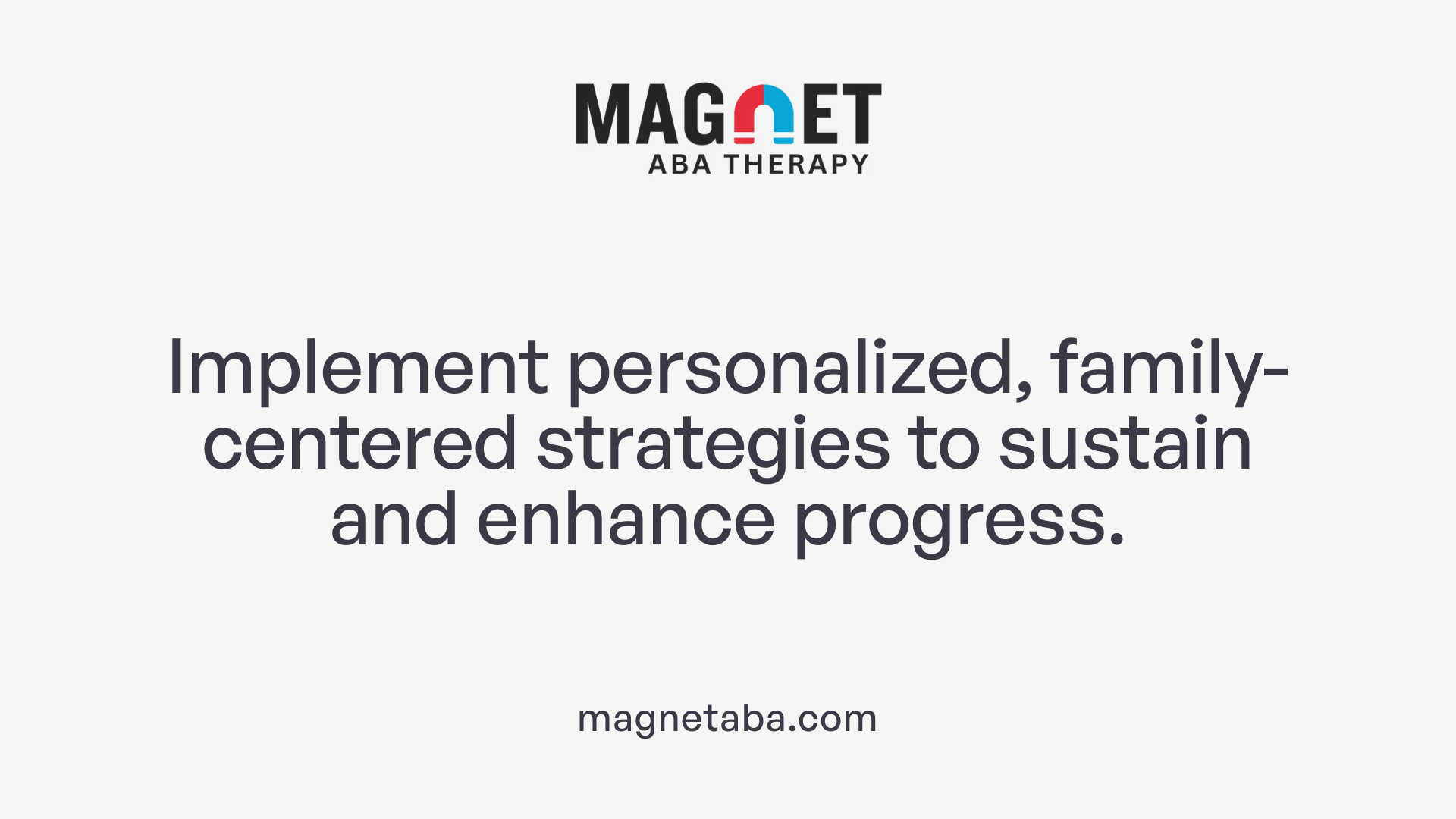Understanding Regression in ABA Therapy
Applied Behavior Analysis (ABA) therapy has been a cornerstone of intervention for children with autism, aiming to improve social skills, communication, and reduce challenging behaviors. However, the path of progress is not always linear; children may experience periods of regression, where previously acquired skills appear to diminish or disappear. Addressing these setbacks effectively requires a thorough understanding of ABA principles, progress monitoring methods, and collaboration between therapists and families. This article explores how to recognize, understand, and manage regression in children receiving ABA therapy, ensuring continued growth and wellbeing.
What is Behavioral Analysis Therapy and Its Role in Autism Intervention?

What is behavioral analysis therapy and how does it relate to autism?
Applied Behavior Analysis (ABA) is a research-based therapy that uses behavioral principles to improve skills and reduce problematic behaviors in people with autism and other developmental disorders. Grounded in scientific study, ABA focuses on increasing positive behaviors such as communication and social interaction, while decreasing challenging behaviors that interfere with learning or social functioning.
What are the goals of ABA in autism intervention?
The primary aims of ABA in helping individuals with autism include:
- Enhancing social interactions and communication skills
- Teaching new skills related to daily living and learning
- Managing and reducing behaviors that may be harmful or disruptive
- Promoting independence and functional abilities
ABA programs are personalized and developed by Board Certified Behavior Analysts (BCBAs) based on careful assessment of the child's unique needs and strengths.
How has ABA evolved over time?
Traditional ABA methods often included highly structured techniques such as Discrete Trial Training (DTT), which used repetitive teaching cycles and sometimes aversive measures. However, modern ABA emphasizes naturalistic and child-led methods. For example, Pivotal Response Treatment (PRT) uses play and the child’s own interests to encourage learning without relying on artificial rewards like candy.
Additionally, Early Start Denver Model (ESDM) blends play and structured approaches to target multiple developmental goals simultaneously. Today’s ABA practices avoid punishment, focusing instead on positive reinforcement and functional alternatives to challenging behaviors.
What scientific principles underpin ABA?
ABA applies foundational behavioral theories about how behaviors are learned and maintained, particularly the concept of reinforcement. Therapists analyze the Antecedent-Behavior-Consequence (ABC) chain to understand what triggers a behavior, what the behavior is, and the results following it. This allows interventions to be tailored to encourage desirable behaviors and reduce undesirable ones.
Through frequent, consistent therapy that often involves family participation, ABA helps children develop foundational skills that serve as stepping stones for more complex abilities. Early and intensive ABA therapy — typically more than 20 hours per week before age 4 — has been shown to produce significant developmental gains and potentially reduce the need for extensive future support.
In summary, ABA is a scientifically validated, evolving therapy that plays a critical role in early autism intervention, helping individuals build functional skills and improve quality of life through personalized, evidence-based approaches.
Who Provides ABA Therapy and How Are Treatment Plans Developed?

Qualified ABA Providers
ABA therapy for autism is usually administered by trained professionals specialized in behavior analysis. This includes Board Certified Behavior Analysts (BCBAs), who are experts trained to design and monitor ABA programs. Additionally, therapists and clinicians who have specific ABA training support the therapy process.
Role of Board Certified Behavior Analysts (BCBAs)
BCBAs play a central role in the delivery of ABA therapy. They conduct thorough assessments of the child's abilities and needs and develop personalized treatment plans. BCBAs oversee the therapy's progress, making adjustments as necessary to ensure the interventions are effective and aligned with the child’s goals.
Personalized Treatment Planning
Each ABA program is tailored to the individual. Treatment plans are developed after detailed consultations with the child and family, considering developmental level, social skills, communication needs, and behavioral challenges. These plans specifically target skill-building and behavior modification to improve quality of life.
Multi-Disciplinary Team Involvement
ABA therapy often involves collaboration with a team of professionals, including speech-language pathologists, occupational therapists, and physical therapists when needed. This team approach promotes comprehensive care that addresses a range of developmental goals.
Settings for Therapy Delivery
ABA interventions are flexible and can take place in multiple environments. Common settings include the child's home, schools, and dedicated therapy centers. Ongoing communication among providers and family members ensures consistency and supports skill generalization across settings.
Together, these elements establish a structured yet individualized ABA therapy framework delivered by skilled professionals aimed at fostering meaningful developmental progress.
Recognizing and Understanding Regression in ABA Therapy

What is Regression in ABA Therapy?
Regression in ABA therapy refers to a setback where a child loses previously acquired skills or shows a decline in behaviors that had been improved. This temporary reversal can affect social, communication, or adaptive skills and may cause concern for families and therapists.
What Causes Regression in ABA?
Several factors can contribute to regression during ABA therapy. Changes in routine, stress, illness, or ineffective intervention strategies may lead to this backward movement. Sometimes regression happens when the therapy intensity changes or when transitioning between different ABA methodologies. Understanding the root causes is vital for adjusting treatment plans appropriately.
How Can Regression be Identified Behaviorally?
Signs of regression include increased tantrums, withdrawal, loss of language abilities, decreased social interaction, or return of self-injurious behaviors. These behavioral changes indicate that the child is struggling and needs reevaluation of therapy goals and methods.
How Does Regression Affect Therapy Progress?
Regression can slow the pace of learning and may disrupt the achievements made through therapy. However, with careful assessment and adjustments, regression is often manageable. Therapists use frequent monitoring to detect these signs early, modifying interventions to support the child’s continued development and minimize negative impacts on progress.
Tracking Progress and Identifying Regression Through Data-Driven Methods

How is progress tracked and measured during behavioral analysis therapy?
In Applied Behavior Analysis (ABA) therapy, tracking progress is systematic and relies heavily on data-driven methods. Therapists use continuous data collection to monitor specific behaviors targeted in the treatment plan. These behaviors are quantified using measurement techniques such as frequency (how often a behavior occurs), duration (how long a behavior lasts), rate, latency (time between a given stimulus and the response), and inter-response time (time between consecutive responses). This comprehensive data helps capture a detailed picture of the child’s behavioral patterns over time.
Systematic Data Collection
Data is recorded using objective, observable, and easily measurable definitions of behavior. Modern ABA therapy often employs electronic tools to enhance accuracy and reduce human error. By collecting precise information consistently, therapists can see clear trends and patterns that indicate progress or the need for modification.
Role of Board Certified Behavior Analysts (BCBAs) in Monitoring Progress
BCBAs lead the assessment and monitoring process by reviewing the collected data regularly. They analyze the results to determine whether the personalized therapy plan is effective or if adjustments are needed. Their expertise ensures that changes to the program are based on reliable evidence rather than subjective impressions.
Using Data to Adjust Therapy Plans
Analysis of behavioral data enables BCBAs to modify teaching strategies dynamically. If certain interventions are not yielding expected gains or if regression in behavior is observed, therapists adjust the goals, techniques, or intensity of therapy. This flexibility ensures that therapy remains aligned with the child's current needs and developmental level.
Collaboration with Families for Data Accuracy
Engaging families in data collection is vital. Caregivers are trained to observe and record behaviors across various environments, improving the comprehensiveness and relevance of the data. This partnership helps maintain consistency and informs the BCBA’s decisions, fostering stronger generalization of skills and sustained behavioral improvements.
| Aspect | Methods Used | Purpose |
|---|---|---|
| Behavioral Measurement | Frequency, Duration, Rate, Latency, IRT | Quantify behaviors accurately |
| Data Collection | Electronic tracking, caregiver input | Ensure precise and consistent data collection |
| Monitoring and Evaluation | Regular BCBA review of data | Assess effectiveness and detect regression |
| Therapy Plan Adjustment | Modifying goals and techniques based on data | Maximize skill acquisition and manage challenges |
| Family Collaboration | Training and involving caregivers | Enhance data quality and promote skill generalization |
Addressing Challenges and Criticisms of ABA in the Context of Regression
What challenges or criticisms exist regarding behavioral analysis therapy for autism?
There are several concerns about ABA therapy stemming from its history and potential impacts. Early ABA practices sometimes included aversive techniques like electric shocks, leading to ethical concerns about those outdated methods. Although modern ABA has moved away from such approaches, the legacy still colors perceptions.
Critics point out that ABA’s emphasis on reducing certain behaviors and encouraging conformity might overshadow a child’s unique personality and natural expressions. This can risk emotional distress or lead to "masking," where children hide their authentic selves to meet expectations, which affects their well-being.
The intensive nature of ABA therapy, especially in early intervention stages where over 20 hours per week might be recommended, can contribute to fatigue or stress. Some argue that skill acquisition might be prioritized over acknowledging emotional and sensory needs, which can cause distress or behavioral regression.
To address these issues, modern ABA focuses on child-centered, respectful approaches. This includes avoiding punitive measures, promoting positive reinforcement, and tailoring interventions to each child's preferences and emotional needs.
Incorporating sensory and emotional considerations is vital. Combining ABA with therapies like occupational therapy for sensory integration can better support children’s overall development and reduce the chance of regression during therapy.
Ultimately, today's ABA practices aim for socially significant, functional skills while ensuring interventions respect individuality and promote long-term independence without causing harm or discomfort.
Strategies to Manage and Prevent Regression During ABA Therapy

How Does Early Intensive ABA Intervention Help Prevent Regression?
Early intensive ABA therapy, especially when started before age 4 and delivered over 20 hours per week, has shown to support significant developmental gains. This early focus helps build foundational skills that reduce the likelihood of regression by addressing challenges promptly. Consistent engagement during this critical period promotes lasting improvements.
Why Tailor Strategies to Individual Needs?
ABA therapy thrives on personalized treatment plans created by Board Certified Behavior Analysts (BCBAs). Since each child's abilities and challenges vary, customizing methods ensures interventions target relevant behaviors effectively. Ongoing assessments let therapists adapt plans dynamically, preventing stagnation or backward steps.
What Role Do Different ABA Methodologies Play?
Various ABA methodologies offer diverse tools:
- Discrete Trial Training (DTT): A structured approach useful for specific skill learning.
- Pivotal Response Treatment (PRT): Uses naturalistic play and child interests to promote motivation.
- Early Start Denver Model (ESDM): Blends traditional ABA with play to address multiple developmental areas. Employing multiple techniques helps maintain engagement and counters regression by meeting the child's evolving needs.
How Important Is Family Involvement and Training?
Families actively trained to implement ABA strategies at home reinforce learning and consistency. This collaboration creates a supportive environment where skills generalize beyond therapy sessions, helping prevent skills loss.
Can Sensory Integration Approaches Complement ABA?
Incorporating occupational therapy methods like Ayres Sensory Integration alongside ABA can address sensory processing challenges common in autism. Such integration supports regulation and reduces behaviors linked to sensory difficulties, minimizing regression triggers.
Why Maintain a Positive Reinforcement Focus?
Positive reinforcement remains central to ABA, encouraging desirable behaviors by rewarding them promptly. Avoiding punitive measures ensures children respond well to therapy, sustaining progress and reducing setbacks.
How Are Therapy Plans Adapted Based on Data?
Therapists continuously analyze the ABCs of behavior (Antecedent-Behavior-Consequence) to monitor progress. This data-driven approach guides modifications to goals and methods, ensuring the therapy remains effective and responsive to the child's development.
By combining early intervention, personalized techniques, family engagement, sensory integration, positive reinforcement, and data-driven adaptations, ABA therapy effectively manages and prevents regression, fostering meaningful long-term outcomes.
Sustaining Progress Through Careful Management and Collaboration
Regression in children receiving ABA therapy can be a challenging phase but is often a natural part of the learning and behavioral development process. Through systematic data tracking, collaborative teamwork involving experienced therapists and families, and adherence to respectful, individualized treatment plans, regression can be identified early and effectively managed. Emphasizing early intensive ABA, flexible methodology application, and positive reinforcement creates a supportive environment that encourages skill retention and growth. Recognizing and addressing critiques of ABA heightens sensitivity to the child’s emotional and sensory needs, ensuring therapy remains ethical and effective. Ultimately, handling regression with patience, professionalism, and compassion helps maintain steady progress toward greater independence and a better quality of life for children with autism.
References
- Applied Behavior Analysis (ABA)
- How to Treat Autism Using Applied Behavior Analysis
- A Comparative Trial of Occupational Therapy Using Ayres ...
- Applied Behavior Analysis (ABA)
- ABA Autism Therapy for Meaningful Outcomes & Rapid Progress
- Children's Specialized ABA | Whole-Child Autism Care
- Autism Professionals in ABA Therapy
- Applied Behavior Analysis (ABA)
- The Top 10 Reasons Children With Autism Deserve ABA
- 6 Benefits of ABA Therapy for Children with Autism












